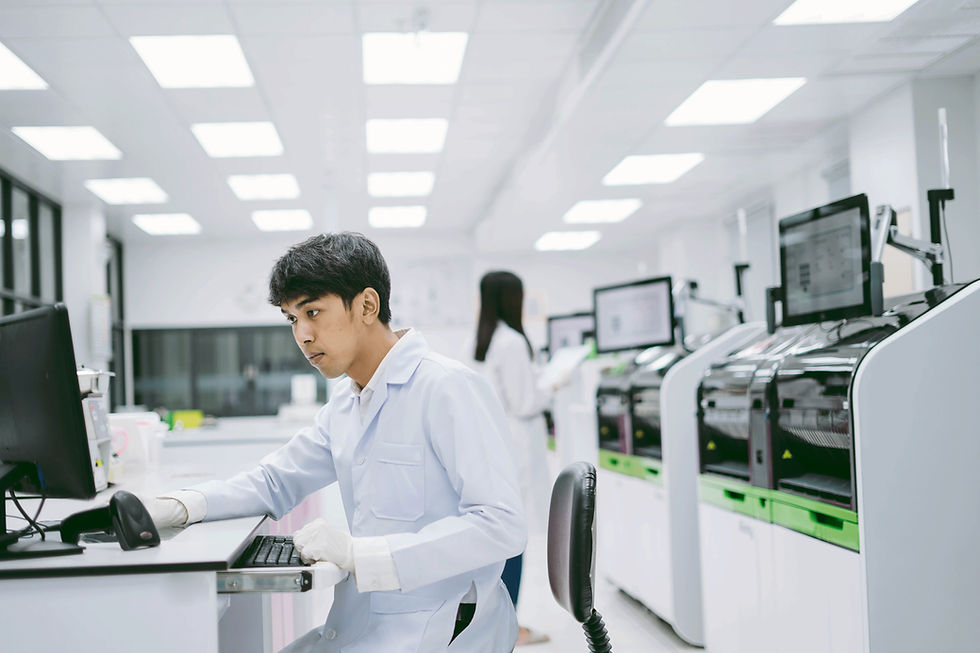Lab Audits Made Easy: 6 Tips For Staying in Compliance in 2023
- Sandeep Nair

- Dec 9, 2022
- 4 min read
Updated: Feb 25, 2023
Introduction
You've got a lab audit coming up, and you're not sure how to prepare. What do you need to do? How can you make sure that your lab complies with all of the relevant regulations and standards? It's not an easy task, but it's one that we've helped many labs successfully navigate. Here are our tips for getting your lab audit ready:
Get your lab audit ready with an all-in-one quality management system
This is your chance to get your lab audit ready!
Imagine yourself in the shoes of an auditor. You’re going to spend countless hours wading through data, reviewing records and documents, and looking for discrepancies. Wouldn’t it be easier if you had a system in place that made everything easy?
A quality management system can help you get ready for an audit because:
It has all the information you need in one place—your laboratory operations manual, standard operating procedures, risk assessments, and more are all there so you don't have to hunt for them during an audit.
It's easy to use—you won't waste time trying to find what's required by regulatory agencies or industry standards when using a QMS takes care of that automatically!
Document the verification and validation process with IQ/OQ/PQ and Electronic Audit Trails
When you're ready to begin the verification and validation process, you'll want to document your IQ/OQ/PQ. This will help you ensure that all applicable standards are being met and that the product is safe for use. Using a software solution like Metquay can help you with this documentation process.
Finally, electronic signatures give users another way of documenting information in their audit trails without having to print out paper copies of every page generated by their systems' processes—which saves trees!
Ensure you are compliant with CFR 21 Part 11, ISO 17025, GAMP®5, FDA Compliance & more
Ensuring compliance with GxP regulations:
CFR 21 Part 11, ISO 17025, GAMP®5, and FDA Compliance are mandatory for all labs that work on regulated products such as food or drugs. These standards set the minimum requirements to achieve a quality system compliant with the regulations and standards of the International Organization for Standardization (ISO) and the International Electrotechnical Commission (IEC).
Your lab should have a Quality Management System (QMS) in place according to these guidelines, including documented procedures for managing risks related to computers in your laboratory environment as well as an audit trail showing how you verify compliance with these requirements at least annually through an internal audit process.
Provide real-time access to SOPs and turn manual tasks into automated processes
Have you ever had to search through dozens of documents for one elusive piece of information? If so, you know how time-consuming and frustrating that can be. To ensure the audit process goes smoothly for your lab, make sure you have all the necessary SOPs and other documentation in a centralized database that is securely accessible by all members of your team.
This database should be easily searchable so it takes just seconds to find what’s needed. The information within should also be easy to find, such as by using keywords or phrases from the audit questionnaire.
The database should also let anyone on your team update or add new content whenever necessary—and there should be no shortage of ways they can do this! Finally, make sure there are plenty of ways your team members can share their content once they create it: email attachments; link sharing tools like Dropbox or Google Drive; embedded links; etcetera.
Automate training and document employee certifications using electronic signatures
Use electronic signatures to ensure your employees are trained and certified. Electronic signatures can be used to document employee training and certification. This will make it easy for you to verify their compliance with regulatory requirements, which will in turn increase the productivity of your lab workers.
Get up to speed on getting yourself or your lab prepared for an audit.
An audit is a comprehensive inspection of your laboratory’s records, procedures, and practices. The goal of an audit is to ensure that you are following good laboratory practices (GLP) and operating in compliance with federal regulations. Audits are a crucial part of the GLP system because they assure that your lab is following all applicable laws, rules, and regulations for animal research.
To become ready for an audit:
Understand why audits are performed by regulatory authorities such as the U.S Department of Agriculture(USDA), Environmental Protection Agency(EPA), etc., so you can be confident when answering any questions they may ask during the audit
Ensure that all documentation related to GLP compliance is up-to-date, accurate, and complete
Ensure full understanding of how information should be recorded to meet both internal and external requirements
Conclusion
Today there are a variety of software solutions that will help you stay compliant with the quality standards and make your audit preparation easy, but it's very important to know your specific needs and choose the right software product.
If you do calibrations in-house then it would be best to procure a commercial calibration management software like Metquay - a calibration management platform that is designed around the ISO 17025 and FDA 21 CFR PART 11 requirements.
If you send your instruments out to third-party labs for calibration what you need is a highly scalable asset management platform that will proactively inform you about the calibration due date of your equipment and keep track of your asset health.
If you are in search of a highly scalable, cloud-based asset management platform that can be implemented quickly without a bank-breaking investment check out tracefii - a cloud-based asset management platform.



Comments